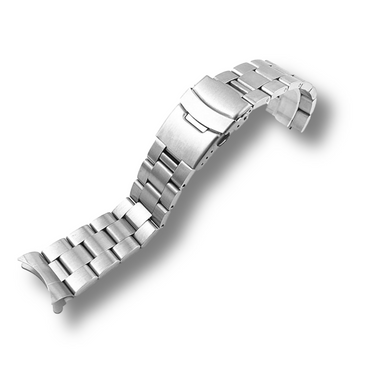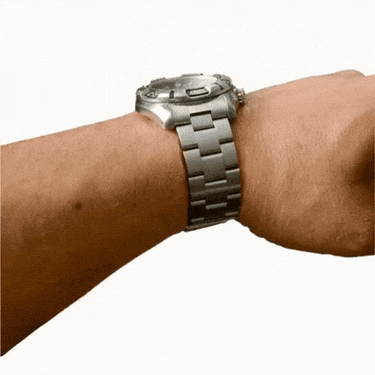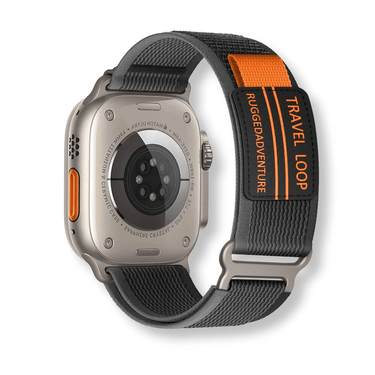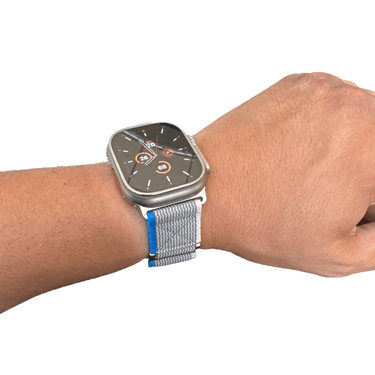The Origin of Watchbands
The concept of the wristwatch was born during the 16th century. At that time, watches were bulky and designed to be worn as a necklace. Later, during the 17th century, men began to wear watches on their wrists. The first watchbands were made of a single piece of ribbon or braid, typically made of cloth, leather, or even hair.

The Evolution of Leather Watchbands
Leather watchbands have been in use since the earliest days of wristwatches. In the early 1900s, the first leather watchbands with buckles were introduced, making them more comfortable and adjustable. During World War I, the military used leather watchbands, which increased their popularity.
Leather watchbands come in various types of leather, including cowhide, alligator, ostrich, and snake. They are durable and give a classic look to watches. However, they require more maintenance and are prone to damage if exposed to water.
The Rise of Metal Watchbands
During the 1930s, metal watchbands became more popular, especially for men's watches. These watchbands were made from metal links and were sturdier than leather watchbands. The metal watchbands were a significant step in watchband evolution because they were waterproof and more durable than their leather counterparts.
Stainless steel was the most common material for metal watchbands, but other materials such as gold, silver, and titanium were also used. Stainless steel is a durable, scratch-resistant, and rust-resistant material that is easy to maintain. Gold and silver watchbands are more expensive and require more maintenance, but they give a luxury look to watches. Titanium watchbands are lightweight and durable, making them perfect for sports watches.
The Advent of Stainless Steel Watchbands
Stainless steel watchbands were introduced in the 1950s and quickly became a popular choice. They were durable, waterproof, and affordable. Stainless steel watchbands are still popular today, with several types of finishes, including brushed, polished, and matte.
Stainless steel watchbands are a great option for people who want a durable and low-maintenance watchband. They are corrosion-resistant and can withstand exposure to water, making them perfect for people who enjoy water sports or outdoor activities. Stainless steel watchbands are also versatile and can be dressed up or down depending on the occasion.

The Emergence of Rubber Watchbands
In the 1980s, rubber watchbands made their debut, and they became a popular choice for sports watches. Rubber watchbands were waterproof, durable, and comfortable. They were also low maintenance and perfect for outdoor activities.
Silicone and rubber watchbands are now widely used for sports and fitness watches. They are lightweight, durable, and waterproof, making them perfect for people who engage in physical activities. They are also available in various colors and patterns, making them a fun and customizable option.
The Introduction of NATO Watchbands
NATO watchbands were first introduced in the 1970s and became more popular in the 1980s. They are made of nylon or other synthetic materials, and they are usually waterproof and comfortable. NATO watchbands are also easy to change and can be found in many different colors and patterns.
NATO watchbands are popular among military personnel, outdoor enthusiasts, and people who want a casual and comfortable look. They are versatile and can be paired with both dress and casual watches. NATO watchbands are also affordable and easy to change, making them perfect for people who like to switch up their watchbands frequently.
The Innovation of Smartwatch Bands
In recent years, smartwatches have gained popularity, and with that, new watchband materials have been introduced. Smartwatch bands are typically made of synthetic materials and come in various colors and patterns. Smartwatch bands are designed to be interchangeable, allowing the wearer to customize their watch easily.
Apple introduced the Apple Watch in 2015, and with it, the Apple Watch Sport Band. The Sport Band is made of fluoroelastomer, a durable and comfortable material that is perfect for fitness and sports activities. Other materials used for smartwatch bands include silicone, nylon, leather, and metal.
Smartwatch bands are versatile and can be dressed up or down depending on the occasion. They are also designed to be comfortable and breathable, making them perfect for people who wear their smartwatches all day.
The Future of Watchbands
The future of watchbands is still being written, and new materials are being introduced regularly. Some of the new materials include carbon fiber, Kevlar, and ceramic. These materials are strong, durable, and lightweight. It is possible that the watchbands of the future will be designed to be even more comfortable, durable, and customizable.
Carbon fiber is a material that is stronger than steel and lighter than aluminum. It is also corrosion-resistant and can withstand extreme temperatures. Carbon fiber watchbands are perfect for people who want a lightweight and durable option.
Kevlar is a synthetic fiber that is used in body armor, racing sails, and aerospace applications. It is five times stronger than steel and is also lightweight. Kevlar watchbands are perfect for people who want a durable and rugged option.
Ceramic watchbands are made of a high-tech material that is scratch-resistant and hypoallergenic. They are perfect for people who want a durable and low-maintenance option. Ceramic watchbands are also available in different colors and finishes, making them a fun and versatile option.
Conclusion
Watchbands have come a long way since the first wristwatches were introduced. From traditional leather watchbands to modern materials, watchbands have evolved to be more durable, comfortable, and customizable. The future of watchbands is still being written, and with new materials and innovations, we can expect even more exciting changes in the years to come.
FAQs:
Q1. What is the most popular material for watchbands?
A1. Leather and metal watchbands are the most popular materials.
Q2. Are leather watchbands waterproof?
A2. No, leather watchbands are not waterproof and can be damaged if exposed to water.
Q3. What are NATO watchbands?
A3. NATO watchbands are made of nylon or other synthetic materials and are usually waterproof and comfortable. They are also easy to change and can be found in many different colors and patterns.
Q4. What are smartwatch bands made of?
A4. Smartwatch bands are typically made of synthetic materials such as silicone, nylon, or leather. They are designed to be comfortable and breathable.
Q5. What are some of the new materials for watchbands?
A5. Some of the new materials for watchbands include carbon fiber, Kevlar, and ceramic. These materials are strong, durable, and lightweight.


























